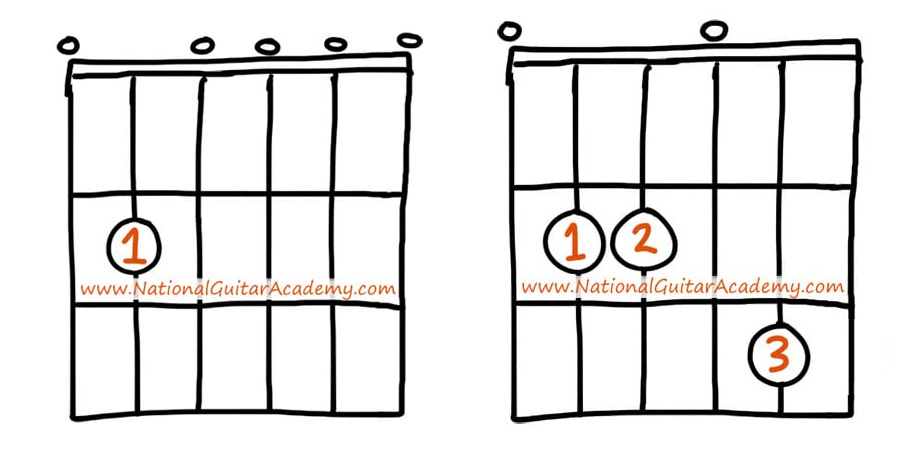Minor Sixth Chord Theory
Pro Tip: Here’s a piece of chord theory I wish someone had told me earlier on in my musical career, which would have saved me quite a few wrong-sounding chords.
The “minor” in a minor sixth chord refers to the third, not the sixth.
So a Cm6 chord is spelled 1, b3, 5, 6. If you look at the C major scale, that’s C, Eb, G, A.
Here are some moveable sixth and minor sixth chord shapes for you to try:
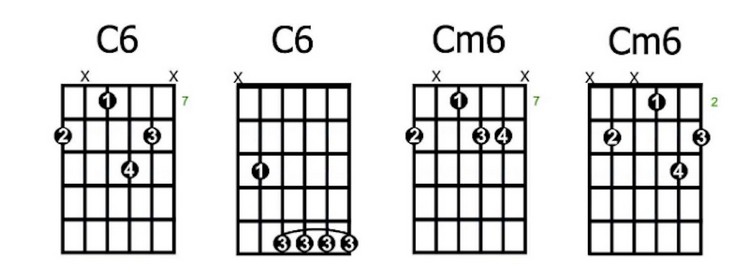
Seventh Chord Theory
Okay, so if all sixth chords are spelled 1, 3, 5, 6, then all seventh chords are spelled 1, 3, 5, 7, right?
Not quite.
It’s true that one kind of seventh chord is spelled 1, 3, 5, 7, but there are a few different kinds of seventh chords, and they all have their own qualities.
By the time you get done reading this, you will be a chord theory expert in the most common kinds of seventh chords and their spelling.
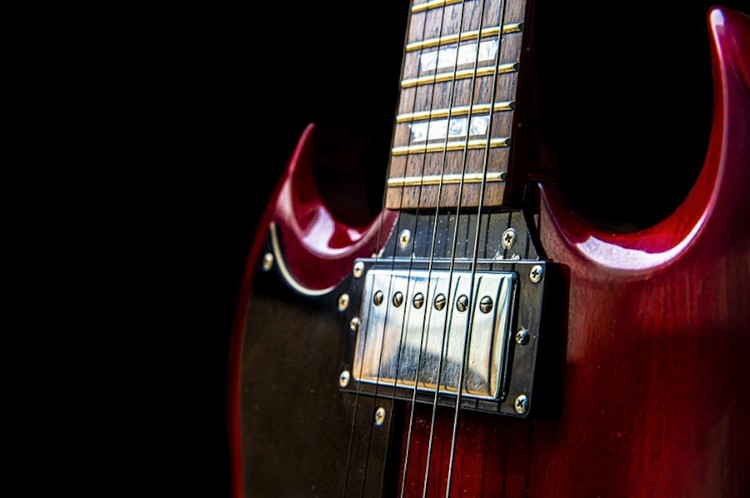
Major Seventh Chord Theory (maj7)
The major seventh chord sounds smooth, peaceful, and pretty. You can hear it all over the place in this lovely old song, “Ventura Highway” by America.
The major seventh chord is spelled 1, 3, 5, 7. That’s a major chord with a major seventh added.
An Fmaj7, for example, has the F major chord – F, A, C – and also an E.
Check out this lesson on the Fmaj7 Chord – 5 Ways to Play this Lovely Chord to dig a little deeper!
Here are some major seventh chord shapes for you to try:
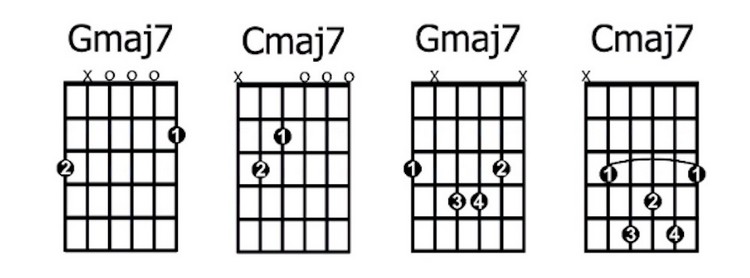
Minor Seventh Chord Theory (m7, min7, -7)
Minor seventh chords sound like minor chords with the pointy edges sanded off.
They are very mellow sounding..
Here’s Neil Young with “Cortez the Killer” to show you how to use an Em7 and an Am7, the first and third chords in the song.
As with all major and minor chords, the root and the fifth notes of the chord stay the same, and the action takes place in the third and seventh.
- A minor seventh chord is spelled 1, b3, 5, b7. It is a minor chord with a minor seventh added.
- An Em7 is E, G, B with a D added.
- Where you add the minor seventh can affect the personality of the chord.
Take a look at these two voicings:
Em7 (020000) and (022030)
- The first voicing buries the D (the fourth note) in the middle of the chord.
- The second voicing puts the D near the top of the chord so you can hear it more prominently against the open E string.

Download our lead guitar cheat-sheet to make things easier
It's hard to understand which scales work with which keys.
So we created a cheat-sheet! A key and scale-finder that you can use again and again.
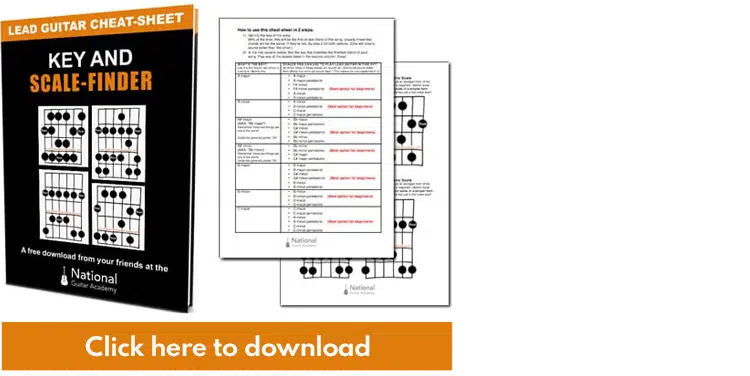
Get your personalised guitar-learning plan 🎸
Get a custom guitar-learning plan here: Click here for GuitarMetrics™
World-Class Guitar Courses 🌎
Learn from the world's best guitar educators: Click here for our guitar courses
Dominant Seventh Chord Theory
The dominant seventh chord is a mix of major and minor, and for that reason, it’s most commonly characterized as “bluesy.”
- Here’s a little “Sweet Home Chicago” to illustrate the point. All dominant seventh chords!
- The dominant seventh chord is spelled 1, 3, 5, b7. That’s a major chord with a minor seventh added.
There are a lot of ways to make a dominant seventh chord happen on the guitar.
Here’s a sample:

Other Slightly Less Common Seventh Chords
If you’ve gotten used to using the scale chart and the spelling method to figure out some of the chords above, you’ve mastered a huge part of chord theory!
The numbers, flat and sharp signs in all chords simply reflect instructions about what notes to add to a major or minor chord.
- Em(maj7), called a minor-major seventh chord, is an E minor chord with a major seventh added. It’s spelled 1, b3, 5, 7 (or E, G, B, D#).
- The minor-major seventh chord is the second chord in “Blue Skies” by Willie Nelson.
- Em7b5, called a minor seventh flat five, is an E minor chord with a minor seventh added and the fifth flatted. It’s spelled 1, b3, b5, b7, or E, G, Bb, D.
To dig a little deeper into chord theory, check out this excellent guitar chord theory book!
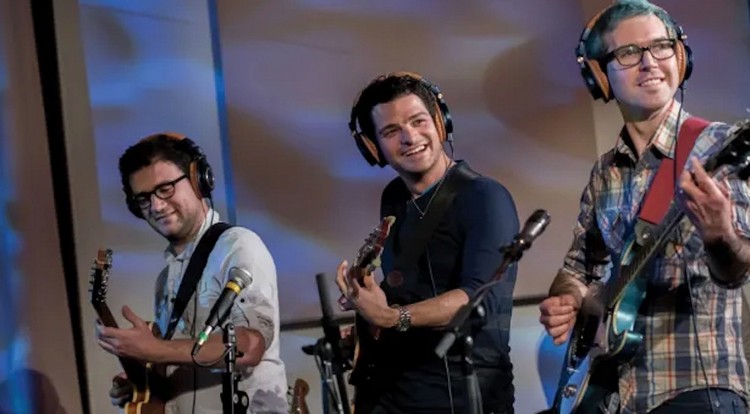
Pro-Tip: You have probably seen numbers that do not exist on our handy scale chart attached to chords.
That’s a topic for a different lesson, but the short answer to that is in chord theory, you find those notes by extending the scale, so that a 9 is the same note as a 2, an 11 is the same as a 4, and a 13 is the same as a 6.
Mapping Chord Theory on the Fretboard
Chord theory is fascinating!
It’s a great intellectual exercise for sure – but to really understand how chords work, the wisest use of your time is to print out some fretboard charts and start mapping out chords.
You can find yourself some interesting shapes, and even figure out your own ways to change between chords!
Recommended Resources
If you enjoyed this lesson on chord theory, you’ll certainly love these other free guitar lessons we have for you below:
What Type of Guitarist Are You?
Take our 60-second quiz & get your results: Take The Quiz
Join the world's best online guitar school 🌎
- Get your own personalised guitar learning plan (customised just for YOU).
- World-class online guitar courses. Learn at your own pace.
- Community Campus & Learning Forum - A friendly community! Connect with our team & students. 😊
- Beginner Song library with chordsheets, tabs and tips. (Songs suitable for all levels!)
- Regular live streams, seminars and Q&A sessions - Learn from world-class guitar educators. Get all your questions answered!
Click here to learn more about National Guitar Academy membership 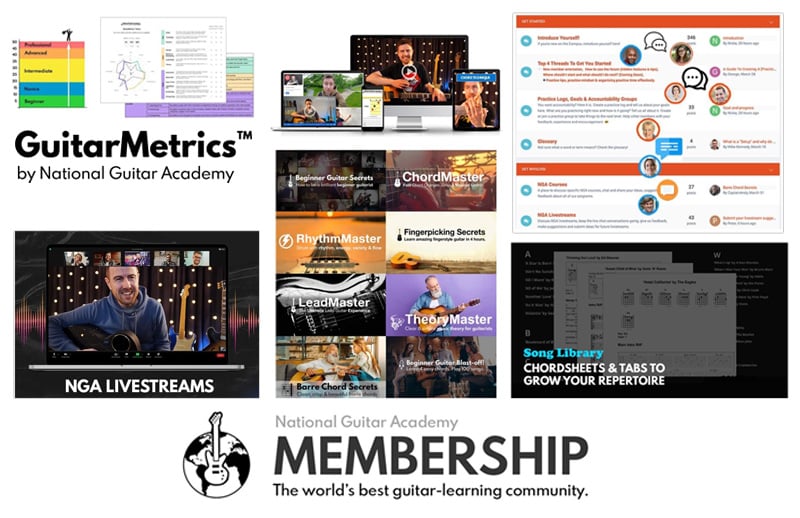
Cool Guitar T-shirts 😎
Look cooler! Check out our merch: Click here to see our merch store
Want free guitar tips and video lessons delivered to your inbox?
Join over 100,000 guitar-learners and subscribe to our guitar-tips-by-email service. (It's free.)
We'll send you a series of lessons that will move you to the next level of your guitar journey.
Learn how everything fits together quickly, easily and effectively. We share ninja tips (for instant fun!) but also timeless fundamentals that will deepen your understanding.


Get our best guitar tips & videos
Popular Lessons
How To Learn Guitar: An 11-Step Programme For Beginners
How To Choose The Perfect Beginner Guitar
More Cool Guitar Stuff
Learn about National Guitar Academy: About Us
Join us on Facebook for daily guitar tips.
Listen to our Learn Guitar Podcast for rapid guitar progress.
Check out our free chord lessons.



